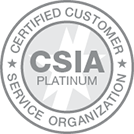With a combination of strategic leadership, partnership, and hard work, board presidents can bring organizations to greater heights.
At any organization, it’s essential to have capable guides at the helm. In the case of non-profit associations, these guides are the board members, who are the fiduciaries steering the organization toward a sustainable future by adopting sound, ethical, and legal governance and financial management policies. However well-intended an organization is, and however beneficial its intended path, it cannot stay the course without a plan for strategic leadership.

The Board President Breakdown
A board president’s role encompasses a broad swath of responsibilities:
- Acting as the face of the organization within their industry
- Prioritizing the organization’s long-term strategy
- Engaging the organization’s volunteers
- Partnering with the executive director
The Challenges — and Opportunities — of Presidency
Every organization comes with a unique set of challenges, so every board president will have a different experience when it comes to managing difficulties. But there are certain areas of overlap that most board presidents will need to address, regardless of their industry. Every challenge, though, is an opportunity for a thoughtful, creative solution that can help guide an organization in new and exciting directions.
Strategic planning. Most organizations want to grow. Whether that growth centers around membership, revenue, participation, or other metrics, a board president will likely need to place considerable focus on strategic planning in order to help their organization reach these goals.
Maintaining relevance. There are often competing non-profit organizations out there, even for-profit groups can be vying for the same membership and public standing as your organization. Even an organization’s own vendors can be competitors if they’re offering education and similar benefits. The board president plays a crucial role in helping guide an organization to demonstrate its continuing relevance in its industry by offering education, networking opportunities, and other member benefits.
Guiding the board, not leading it. A challenge specific to non-profit organizations is the nature of its leadership. Particularly if a given board president is the CEO of their own company, they may have an expectation of what it means to now be president of the board. However, the role is very different from being the president of a company. It’s about group decision-making.
Unexpected bumps in the road. Challenges large and small will always appear and the president needs to be prepared to meet them with composure. During the COVID-19 pandemic, for example, many board presidents found themselves shouldering more responsibility than usual, because many important decisions needed to be made quickly to keep organizations running. The executive committee—the president, vice president, secretary, treasurer, and usually the immediate past president—were the core decision-making group for many organizations during the pandemic, but having a strong executive director capable of assisting that core group can make any president’s job far easier.
The Board President’s Tool Kit
To prepare for the challenges and responsibilities coming their way, it’s helpful for future board presidents to hone the skills they’ll need to bring to the position. This is where the executive director, with their years of experience running the organization, can be incredibly useful. This is also why it’s useful for an organization to be run by a trio of board presidents — the immediate past president and the current president can mentor the future president so they’re prepared for the role by the time they step into it. The specific skills needed will vary by association, but the ones on this list will be needed by most board presidents:
- Running the board meeting. Being responsible for crafting an agenda, calling for motions, and recognizing speakers is a different experience than just attending a board meeting.
- Managing volunteers. From encouraging members to become volunteers to divvying up responsibilities — and even settling possible disputes — the president will likely be much more involved with the volunteers than they were as a member.
- Building consensus. Learning the art of diplomacy will serve any board president well, because building consensus among the board members is an essential piece of making the decisions that bring an organization closer to its goals.
- Ensuring the board operates smoothly. To keep an organization on track, the board must stay on track. This means adhering to the governing documents, following the board procedures, and assessing and improving its own performance — all guided by the board president.
- Being a subject matter expert. The board president represents the organization both when it comes to public relations and when it comes to addressing the membership, so they need to be familiar with the organization’s key talking points, legislative concerns, slate of programs, strategic plan — anything and everything someone might ask about the organization.
By having a board leader who is attuned to the needs of both the board and the organization itself, an association is in the best possible position to further its goals and support its members and industry. Through years of experience as a member of an organization, continuity with past and future presidents and the executive director, and an enthusiasm for the role, a board president can make a huge difference as they help guide an organization to greatness.




